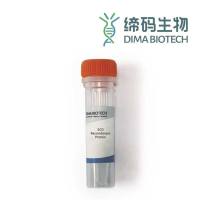Analysis of Poly(A) Tail Lengths by PCR: The PAT Assay
互联网
1185
The procedure described here, the PCR poly(A) test (PAT), allows the analysis of the poly(A) tail on a specific mRNA within a pool of total RNA in a rapid (1 day) and sensitive (subnanogram total RNA) fashion. The assay also provides quantitative estimates of the RNAs poly(A) tail length (1 ). RNA manipulations up to and including cDNA synthesis are carried out in a single tube, minimizing handling and possible RNase contamination. Most importantly, once the PAT cDNAs are synthesized they are stable and can be used repeatedly to study any mRNA within the population by a PCR reaction. The ease and sensitivity of this technique make it amenable to the analysis of poly(A) tail lengths in virtually any system. Current and past applications include poly(A) analysis in mouse oocytes (1 ), Drosophila oocytes and embryos (2 –4 ), C. elegans (B. Goodwin, personal communication; M. Gallegos and J. Kimble, personal communication), yeast (J. Engebrecht, personal communication), and cultured cells (5 ). A previous simpler version of this assay (6 ) has been used to study cytoplasmic polyadenylation in mouse (7 ) and zebrafish (M. O’Connell, personal communication) embryos, as well as nuclear polyadenylation of nascent transcripts (mouse [8 ]; Xenopus [9 ]) and polyadenylation in mouse submaxillary glands (10 ).









